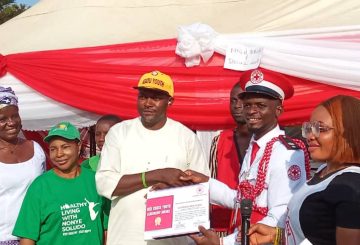
Minister of Finance, Zainab Ahmed stated this while briefing State House correspondents after Wednesday’s cabinet meeting presided over by President Muhammadu Buhari.
The Minister said that the intention was for the creation of a regional power pool in West Africa.
“The project aims to connect Nigeria, Niger, Benin Republic, Togo and Burkina Faso with a high voltage 330kw transmission line to facility energy trade between the participating countries,” she said.
According to her, the project is in the total sum of $640million out of which each of the countries involved has a component.
Smallest contribution
She said Nigeria’s component of $27.3million, which is a concessionary loan, is the smallest contribution among the countries involved in the project.
“This is a loan that the five countries are taking together from the bank.
“Other countries have completed their own process and this is one of the final stages for Nigeria to complete its own process to make the project effective,” Ms Ahmed said.
Rural electrification
The Minister also said Federal Executive Council also approved a facility of $150million from the AfDB and $50million from the African Rural Growth Together Fund to finance the Nigerian Electrification Project.
“The Nigerian Electrification Project is a nation-wide initiative to be implemented by the Rural Electrification Agency.
“The project aligns with the strategy of the Nigerian Government of electrifying the rural community. The project has four components.
“The first is the Solar Hybrid Mini-Grid for rural economic development, while the second component is productive appliances equipment for off-grid communities.
“The third component is energising education while the fourth component is institutional capacity building.
“The impact of the project, when fully implemented, is that about five hundred thousand people would have access to electricity.”
According to the Minister, the maximum power of the project would be 76.5mw installed generating capacity, part of which would be 68mw of solar.
Lagos Master Plan
The cabinet also approved a loan of $20million from the French Development Agency for the Lagos State Strategic Transport Master plan.
The Minister said the project has two major components, one of which is to rehabilitate urban roads and the creation of a minimum of eight quality bus corridors and the creation of two multi-model interchanges at Marina and Mile 2.
The second objective is to provide technical support for project implementation and management.
“The objective is to improve the living conditions of inhabitants of Lagos Urban Area and to promote urban development setting by efficient urban development system.
“When this project is completed, it is expected to impact up to 1.8million inhabitants in Lagos State.
“They will be able to have access to quality bus corridors as well as a cumulative of 1.5million users per day for the interchanges with 620,000 and projected 480,000 boarding at the Marina.
“In addition, there is expected to be a daily traffic expected on the QBS of 640,000,” Ms Ahmed explained.
The project would be undertaken by Lagos State, through its agency, Lagos Metropolitan Area Transport Authority, LAMATA.




